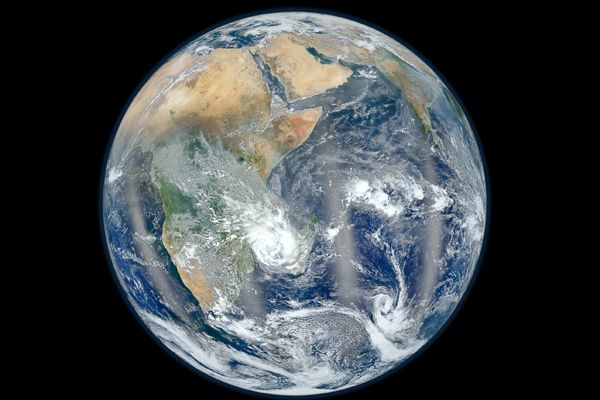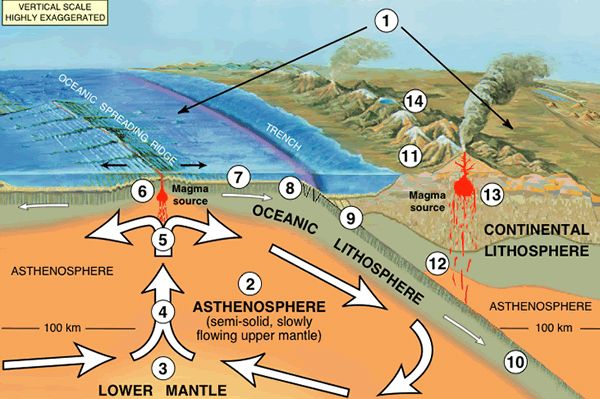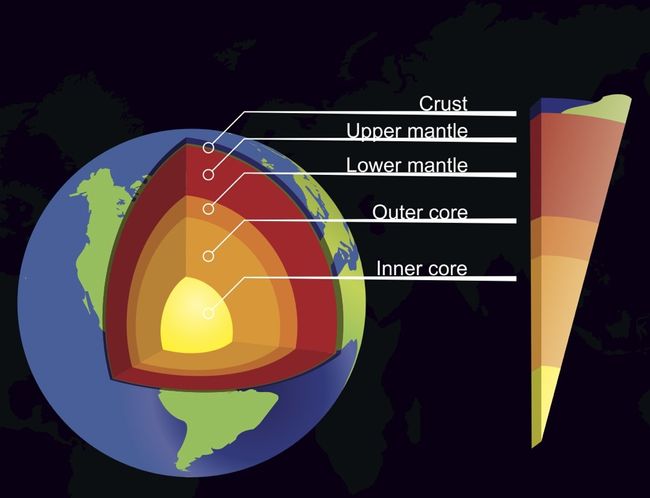https://www.livescience.com/46291-ocean-hidden-beneath-earth-photos.htmlBy Live Science Staff June 12, 2014 Planet Earth

Gravity has less pull at the equator. (Image: © NASA/NOAA.)
Earth's Layers

(Image credit: NASA.)
Scientists have now found evidence for oceans' worth of water locked up in a mineral called ringwoodite lurking deep within the Earth's rocky mantle. The mantle lies between Earth's crust (at the surface) and its deep core.
Deep within the Earth's rocky mantle lies oceans' worth of water locked up in a type of mineral called ringwoodite, new research shows.
The results of the study will help scientists understand Earth's water cycle, and how plate tectonics moves water between the surface of the planet and interior reservoirs, researchers say.
The Earth's mantle is the hot, rocky layer between the planet's core and crust. Scientists have long suspected that the mantle's so-called transition zone, which sits between the upper and lower mantle layers 255 to 410 miles (410 to 660 kilometers) below Earth's surface, could contain water trapped in rare minerals. However, direct evidence for this water has been lacking, until now. [See Images of Water-Rich Ringwoodite and Earth's Layers]
To see if the transition zone really is a deep reservoir for water, researchers conducted experiments on water-rich ringwoodite, analyzed seismic waves travelling through the mantle beneath the United States, and studied numerical models. They discovered that downward-flowing mantle material is melting as it crosses the boundary between the transition zone and the lower mantle layer.
Plate tectonics table

(Image credit: USGS.)
The researchers, who describe their results in the June 13, 2014, issue of the journal Science, say their results will shed light on Earth's water cycle, and how plate tectonics, which details how Earth's outer shell is divided into several plates that glide over the mantle, moves water between the surface of the planet and interior reservoirs, researchers say.
Earth's Mantle

(Image credit: photoplotnikov | Shutterstock)
The Earth's mantle is the hot, rocky layer between the planet's core and crust. Scientists have long suspected that the mantle's so-called transition zone, which sits between the upper and lower mantle layers at depths of 255 to 410 miles (410 to 660 kilometers) below Earth's surface, could contain water trapped in rare minerals. However, direct evidence for this water has been lacking.
mantle-schematic-120322

(Image credit: Nicholas Schmerr)
In order to find out whether this mantle transition zone indeed held a deep reservoir for water, the researchers ran experiments on water-rich ringwoodite, analyzed seismic waves travelling through the mantle beneath the United States, and they also studied numerical models.
Shown here, seismic waves reflect from the interface of the lithosphere-asthenosphere boundary within Earth's mantle. Below the lithosphere lies the asthenosphere, the portion of the mantle that is made up of hot, weak, flowing rock, but that is nevertheless solid.